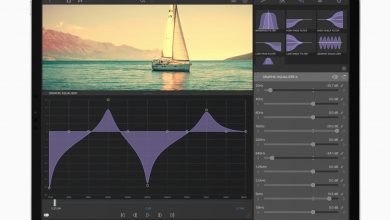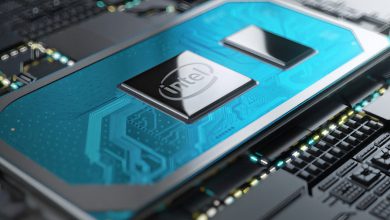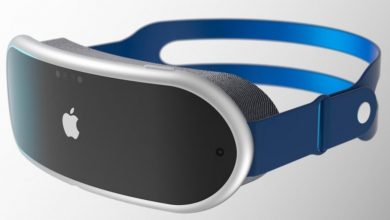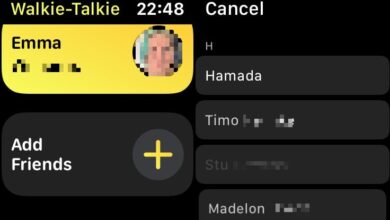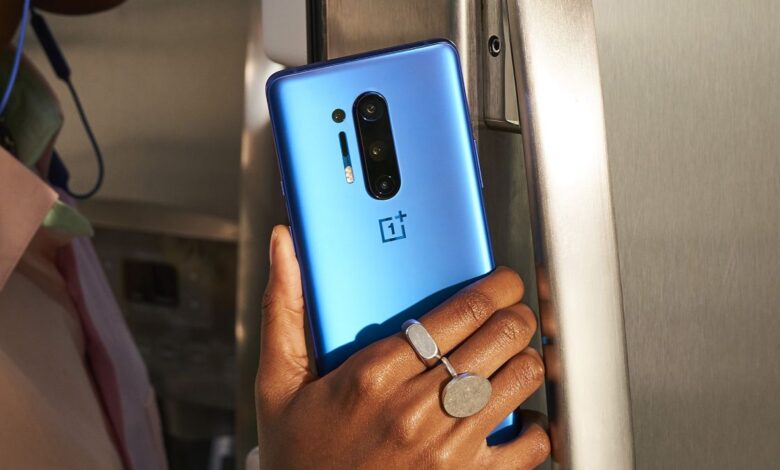
The OnePlus 8T and 8T Pro will in all likelihood be OnePlus’ next major release, announced toward the end of 2020. While OnePlus unveils its main range of phones every spring, around fall it brings out an interim upgrade to the original handsets, marking them with a ‘T’ after their number/name.
OnePlus has brought out a T series phone (or phones) every year since 2016, and we’re interested to see how it manages to improve on the excellent OnePlus 8 and OnePlus 8 Pro, which have fast become two of our favorite smartphones. Things might be a little different this year now that we have the mid-range OnePlus Nord joining the 8 series in the company’s phone lineup, but we still hope that OnePlus brings us a OnePlus 8T so it can firmly establish itself as one of the top Android phone makers around.
So while the clock runs down until the expected Q3 release window, we’ve been looking for news and rumors about what we can expect to see. The OnePlus 8 and OnePlus 8 Pro are a pair of high quality devices that made both our best phones and best Android phones lists, but there are still areas where they could improve. We’d love to see some adjustments to the phones’ photo-capturing capabilities, and for the OnePlus 8 in particular to gain some of its more expensive sibling’s features, making it a better value proposition.
Here’s the latest OnePlus 8T and OnePlus 8T Pro rumors and leaks, along with what we’re hoping OnePlus will deliver with its next phones.
Going on sale around the world in April, the OnePlus 8 and OnePlus 8 Pro start at $699/£599 and $899/£799, respectively. This gets you 8GB RAM and 128GB storage on both phones, but you can pay $799/£699 or $999/£900 to bump that up to 12GB RAM and 256GB.
While there are no specific rumors to go on, we can assume the OnePlus 8T and 8T Pro will appear around October, as the OnePlus 7T and OnePlus 7T Pro did last year. The T models from OnePlus typically land six months after the company’s previous phones debut, although there may be delays because of coronavirus and lockdowns disrupting the company’s plans, but we’ll have to wait and see about that.
As for pricing, the T versions tend to cost a little more than the original phones they’re based on, so expect potential prices of $749/£649 and $949/£849 for the OnePlus 8T and OnePlus 8T Pro respectively.
Unlike previous years, there won’t be a McLaren Edition of the Pro model this go-around. This has been the ultimate version of previous years’ models where OnePlus redesigns its UI, adds a little more memory capacity and encases the phone in a unique black and Papaya Orange colorway.
After much speculation, OnePlus recently confirmed to Android Authority that its partnership with McLaren has ended amicably, “at its scheduled conclusion,” meaning you won’t see any more McLaren-branded OnePlus handsets for the foreseeable future.
OnePlus 8T and 8T Pro Specs (expected)
Release date: Fall 2020
Models: 12GB RAM/256GB storage, possibly 8GB RAM/128GB storage
Prices: Likely starting at $749/£649 and $949/£849
Processor: Snapdragon 865 or Snapdragon 865 Plus
Display: OLED, 6.55 inches w/ 90Hz refresh rate or 6.78 inches w/ 120Hz refresh rate
With recent releases, OnePlus has looked to broaden the availability of its phones, after years of only selling the devices unlocked through its website. The OnePlus 6T was the first OnePlus phone offered via T-Mobile two years ago, and with the OnePlus 8, Verizon joined the mix of carriers selling OnePlus devices.
You’d expect those carriers to continue selling any future OnePlus phones, including the OnePlus 8T, though we’ve yet to hear any rumors about those companies’ plans. Should Verizon sell the OnePlus 8T or OnePlus 8T Pro, we’d imagine it could be a similar situation to what Big Red did with the OnePlus 8 — there’s a separate Verizon-only model of the OnePlus 8 specifically designed to work with the carrier’s mmWave-based 5G network.
With the OnePlus 8 and 8 Pro, OnePlus locked the various colors of its handsets to different locales and versions. For example, in the UK, you can only get the 8GB/128GB versions of the OnePlus 8 and OnePlus 8 Pro in Onyx Black, with the 12GB/256GB versions only coming in Glacial Green. Similarly, the Ultramarine Blue and Interstellar Glow editions of the phone, arguably the most handsome, are only available in the US on the 8 Pro and 8, respectively. OnePlus should allow users to pick their preferred color on any version in any country with the 8T series, and maybe add a couple of new choices for good measure.
As for the actual shape of the phone, it’s hard to make a prediction without some actual leaks. OnePlus doesn’t always change the design of its phones between generations, though the OnePlus 7T was an obvious exception after it adopted a circular rear camera bump that looked nothing like the OnePlus 7.
We’d expect the curved display and punch-hole front camera notch of the current phones to remain in the OnePlus 8T, but other than that, we’ll have to wait and see.
The standard OnePlus 8 uses a 6.55-inch FHD OLED display that has a 90Hz refresh rate. The OnePlus 8 Pro has a 6.78-inch QHD OLED panel capable of an even faster 120Hz refresh rate.
When the OnePlus 7T and OnePlus 7T Pro appeared last year, there was no change from the original OnePlus 7 Pro’s display, but the 7T gained the same 90Hz refresh rate as the Pro model. If OnePlus repeats history by giving the 8T a 120Hz refresh rate, then it would make the cheaper phone a lot more competitive with rivals, even if the FHD resolution wasn’t upped to QHD in order to let the 8T Pro keep an advantage.
Currently, the OnePlus 8 uses a 48MP main camera, 16MP ultra-wide camera and a 2MP macro camera. Meanwhile the 8 Pro has a 48MP main camera, an 8MP telephoto camera with 3x optical zoom, a 48MP ultra-wide camera and a 5MP color filter camera.
The standard OnePlus 8 doesn’t have a telephoto camera, and adding one on would really help round out the experience. As for the OnePlus 8 Pro, we’d love some more general upgrades, and perhaps for the color filter camera to be swapped for a different lens. The color filter is unusual in that it can produce some awesome “x-ray” style images — or at least could, before OnePlus disabled the feature in an update. The company still plans to bring back the color filter functionality, sans the x-ray effect, but its standard function of giving photos into an unusual greyscale image isn’t a very versatile option, unlike a time-of-flight sensor that could help with image processing and AR apps, which most other Android flagships use as their fourth sensor.
The only thing really missing from the OnePlus 8 Pro’s photography arsenal is more megapixels or better post-processing. For example, the Samsung Galaxy S20 Plus uses a 64MP telephoto camera, while phones like the iPhone 11 Pro and the Google Pixel 4 have excellent software that allow their smaller sensors to still produce great shots. OnePlus is stuck in the middle of these two, and should try to pick one direction to focus on in order to up its photo game.
Within the code for an update for the OnePlus Camera app, strings were found that mentioned a 64MP camera. While the main cameras aren’t an area where the OnePlus 8 series needed major improvements, this increase in megapixels could still be useful.
Fortunately, it seems OnePlus is aware it needs to step up its computational photography game too. The company recently shared insights from its May Open Ears Forum — a regular gathering of OnePlus enthusiasts and employees to discuss ways the company can improve its products. XDA Developers shared these insights, and most of the shortcomings OnePlus looks to correct stem from the camera software in its latest phones.
According to XDA’s report, OnePlus intends to zero in on eliminating the HDR system’s unintentional “halo effect,” correcting white balance across all camera lenses, improving the user experience for the auto-exposure lock feature and continually optimizing post-processing. It’s important to note that these aren’t so much fixes intended for the OnePlus 8T line specifically; rather, the firm intends to release updates to the existing OnePlus 8 series in an effort to improve the photography from those models via software. That said, of course these adjustments and priorities will factor into OnePlus’ next line of devices, so they’re relevant in the context of the future, too.
Contents
OnePlus 8T and 8T Pro performance
All versions of the OnePlus 8 use the Snapdragon 865 chipset, the gold standard for Android flagship performance this year. Last year, the OnePlus 7T series was able to benefit from Qualcomm releasing a Snapdragon 855 Plus, an enhanced version of the original 855 CPU that provided a performance boost to the company’s T phones.
Although there was some uncertainty about whether Qualcomm would release a Snapdragon 865 Plus, the upgraded chip was revealed in early July. Therefore we’d be surprised if OnePlus didn’t take the opportunity to give the 8T series the better processing power that this offers, since sticking with the basic 865, particularly when the Samsung Galaxy Note 20 is rumored to use the 865 Plus, would be leaving essentially free performance on the table.
We don’t expect the RAM in the OnePlus 8T to go higher than 12GB, but it would be good if this was offered as standard, instead of the 8GB option that both the entry-level OnePlus 8 and OnePlus 8 Pro come with.
We may have some idea of what the OnePlus 8T will be using thanks to a Geekbench listing (via TechRadar). The listing shows a OnePlus device with an unknown model number, running a Snapdragon 865 or 865 Plus with 8GB RAM, and using Android 11 as its operating system. The results are surprisingly similar to the current OnePlus 8, but hopefully this is because OnePlus is still working to squeeze all the power it can out of the Qualcomm-made chipset.
Because the ‘kona’ codename can refer to either the standard 865 or the 865 Plus chipset, this may mean we don’t see OnePlus use the advanced version of the chip. That would be out of character compared to previous years, but it may explain the similar benchmark scores.
OnePlus 8T and 8T Pro software
OnePlus’ OxygenOS is perhaps the best non-stock version of Android around, thanks to its limited but intelligently implemented additional features that don’t clog up your phone with pointless apps. By the time we expect the OnePlus 8T series to launch, Google will most likely have revealed Android 11, the next edition of its mobile operating system.
OnePlus is usually very quick to adopt the new version of Android, as evidenced by the OnePlus 7T and 7T Pro, which were among the first non-Pixel phones to feature Android 10. If the company can manage the same thing with the OnePlus 8T, its users will be very happy indeed.
OnePlus 8T and 8T Pro 5G
Both the OnePlus 8 and OnePlus 8 Pro are already 5G compatible – Sub-6GHz by default, with the OnePlus 8 version Verizon sells adding compatibility with the carrier’s unique mmWave network. We doubt OnePlus is going to drop 5G support for the 8T series, so the only thing it could really do to improve is offer mmWave and Sub-6GHz by default. This would mean unlocked and carrier-locked handsets could work on any 5G network around the world, although making this happen would likely be too expensive for OnePlus to consider.
OnePlus 8T and 8T Pro battery and charging
The OnePlus 8 has a 4,300 mAh battery, while the OnePlus 8 Pro has a 4,510 mAh power pack. Once again, a boost to the standard model’s specs to match the Pro would be very welcome. Fitting in more capacity so the OnePlus 8T could match the 5,000 mAh battery of the Galaxy S20 Ultra would be fantastic, but is unlikely.
Currently, the OnePlus 8 and OnePlus 8 Pro both use Warp Charge 30T, OnePlus’ speedy charging standard that fills the phones up nice and fast. The OnePlus 8 Pro is also capable of wireless charging, and at an impressive maximum of 30W when using OnePlus’ own wireless charger.
Obviously we’d like for wireless charging to be available on the OnePlus 8T as well as the 8T Pro. It wouldn’t even have to be the full-fat 30W version if that was too expensive, since just having the standard Qi charging options of 5W or 10W would be enough for the standard 8 to match up with other Android flagships.
We recently saw OnePlus register a 65W charger with German certifier TÜV Rheinland, which is a pretty big indicator that the company’s preparing to up its charging speeds once again. Originally, we thought the phone maker may save this feature for next year, with a device presumably named the OnePlus 9, but the Android 11 beta includes hints that the OnePlus 8T will support 65W charging.
The way the 65W charger works is pretty clever, and we know this from the Oppo Find X2, which uses an identical wattage and is part of the same parent company as OnePlus. That makes it quite likely the different phone brands will share components. Instead of using a single battery that charges at 30W like the OnePlus 8, the Find X2 contains two smaller batteries that both charge at 32.5W, meaning that you can fully charge the phone twice as fast while not significantly changing the power input.
OnePlus 8T and 8T Pro: What we’d like to see
Leaks are still thin on the ground for the OnePlus 8T as of this moment. While OnePlus itself often releases teaser details before it launches its phones, we’re still waiting for any strategic OnePlus 8T leaks. So what are the most important improvements that OnePlus could make to this year’s T models?
Improved basic models: OnePlus wants to keep its prices lower than its rivals, but in doing so it means that its basic models can struggle to compete with other phones. Adding in wireless charging, 120Hz refresh rate and a telephoto camera to the OnePlus 8T will make this a far better rival to the Galaxy S20 or iPhone 11. Also, giving both 8T models 12GB/256GB storage by default for only a small increase in price will also help with these comparisons, and give users the speed and space they deserve.
All color options for all models and all countries: There is no discernible benefit to locking off certain colors just because you don’t want a specific amount of memory or live in a certain place. Let us have the power to choose, OnePlus! Every other smartphone maker does, and you should too.
Android 11 at launch: The software is one of any OnePlus phones’ best features, and giving users access to the latest version of Android before anyone else makes it all the sweeter. Assuming Google and OnePlus haven’t been caught out with delays, let’s see OnePlus repeat its performance from previous years and offer the latest Android features from the moment the phone goes on sale.

